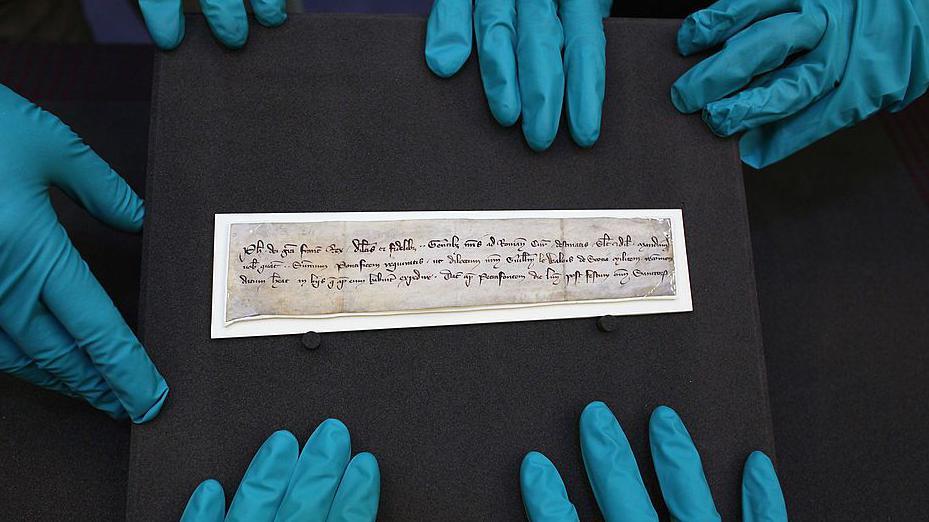Rare William Wallace letter to go on show

The letter is going on display on 30 November for the first time since 2018
- Published
A 700-year-old letter of recommendation from the King of France for William Wallace is to go on public display in Edinburgh for just five hours on St Andrewās Day.
Written in a form of Latin shorthand, the letter is one of only two surviving documents with a personal connection to the famous Scottish warrior and leader, according to the National Records of Scotland (NRS).
The letter, sent to the French kingās agents in the court of Pope Boniface VIII in Rome in November 1300, was discovered in the Tower of London in the 1830s.
It commanded them to recommend the Scottish knight to the Pope.
Sir William Wallace led the Scots to victory at the battle of Stirling Bridge in 1297
Wallace, one of Scotland's best-known historical figures, led the Scots to victory against an English army of King Edward I at the Battle of Stirling Bridge in September 1297, as part of a struggle for independence.
He is said to have travelled to France in 1299, following his resignation as Guardian of Scotland in favour of Robert the Bruce the year before.
Historians believe the letter was written in 1300 to help Wallace secure safe passage on a journey across Europe to Rome.
Head of medieval and early modern records at NRS, Alan Borthwick, said: āWhile Wallace is known to have been in France in 1300 it is not known why.
āSome have suggested he may have been seeking support to have the deposed Scottish king, John Balliol, restored to the throne.ā
King Philip IV of France was said to have financially supported Wallace, like other Scottish knights already living in France.
Wallace is thought to have returned to Scotland in early 1303.
He evaded capture by the English until August 1305, when John de Menteith, a Scottish knight loyal to King Edward, turned him over to English soldiers in Robroyston, near Glasgow.
Wallace was taken to London for trial, where he was hung, drawn and quartered for high treason shortly after.
The William Wallace Letter is one of only two surviving documents with a personal connection to the Scottish knight
The fragile fragment is on loan to NRS from the National Archive at Kew.
Two tapestries inspired by the two surviving letters will also be in display.
They will be on show at General Register House in Edinburgh from 10:00 until 15:00 on 30 November.
Two tapestries have been designed from the intricate lettering and historic parchment of the documents